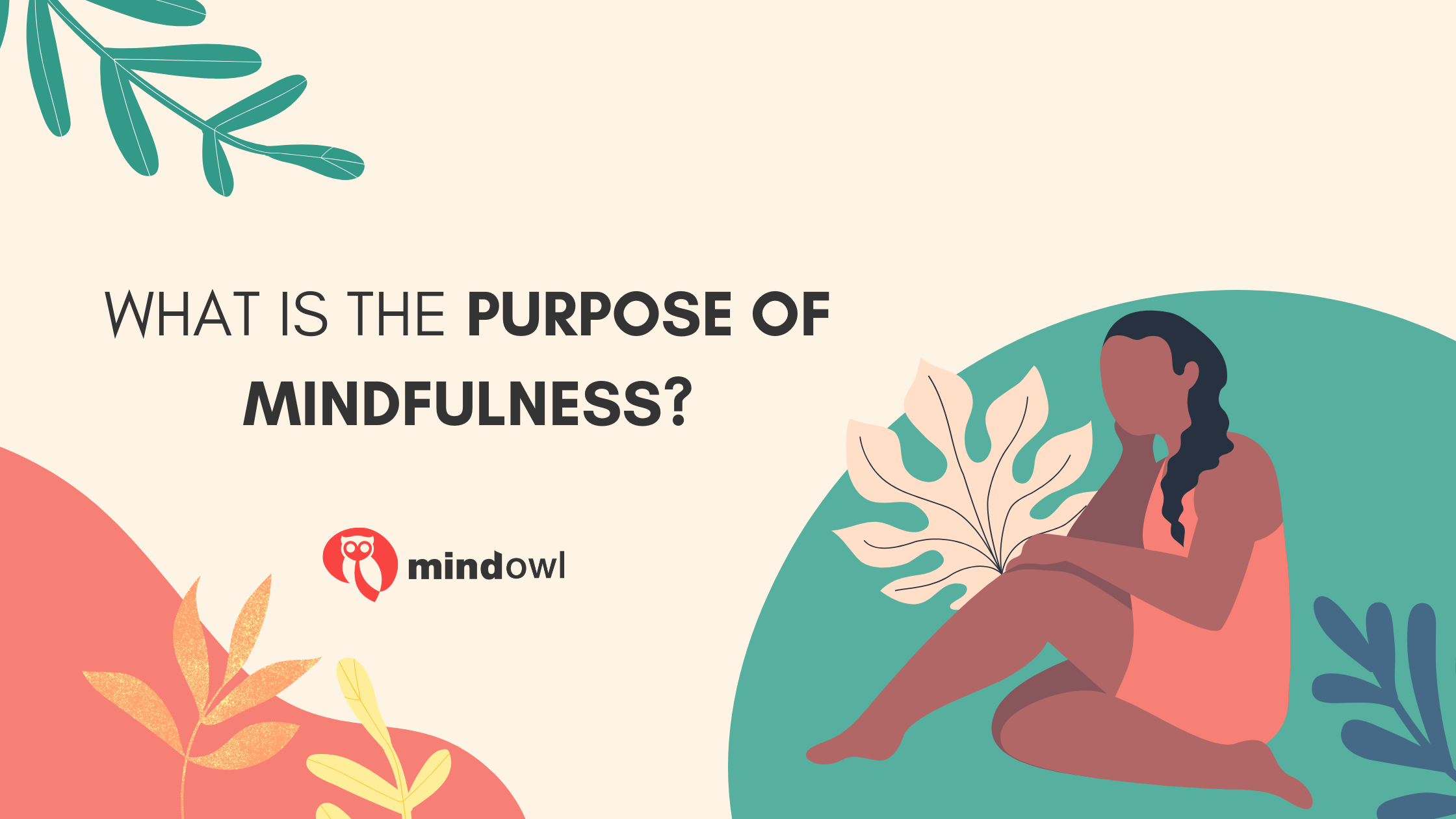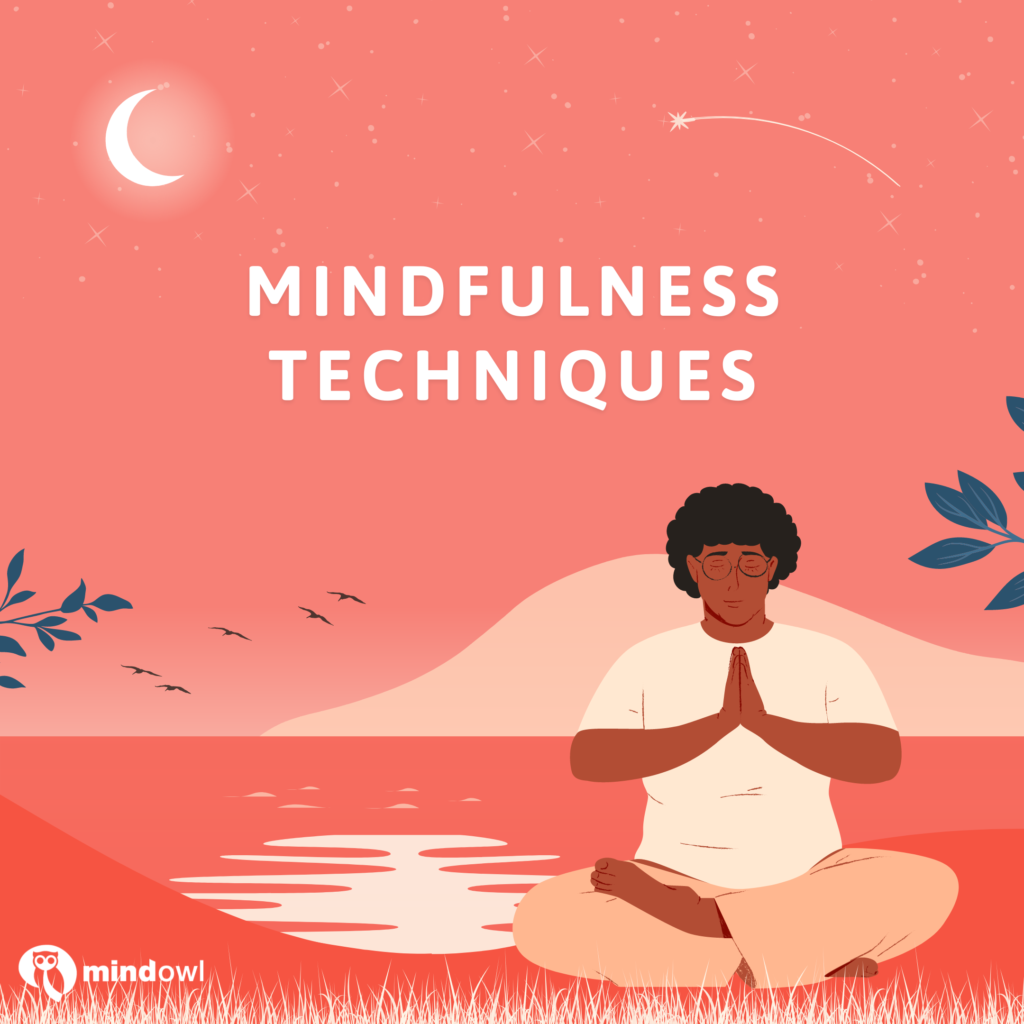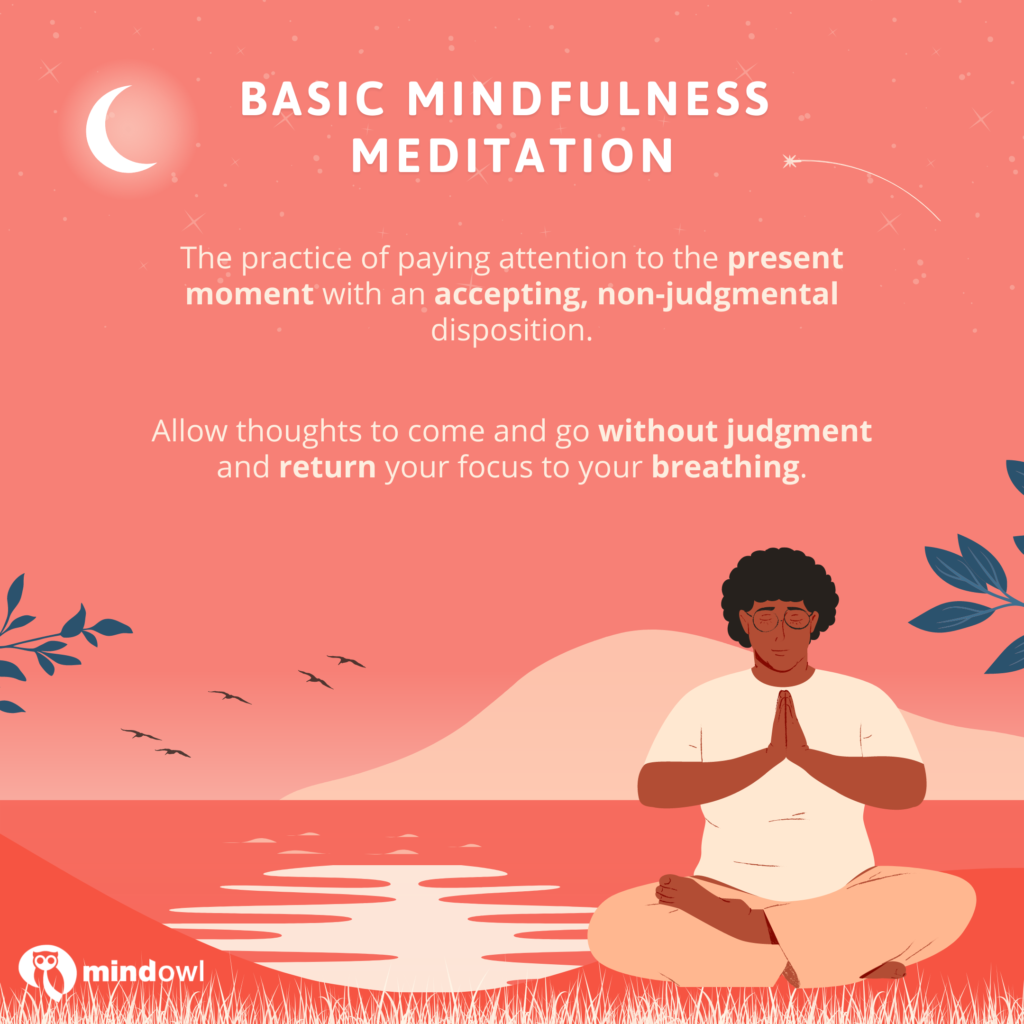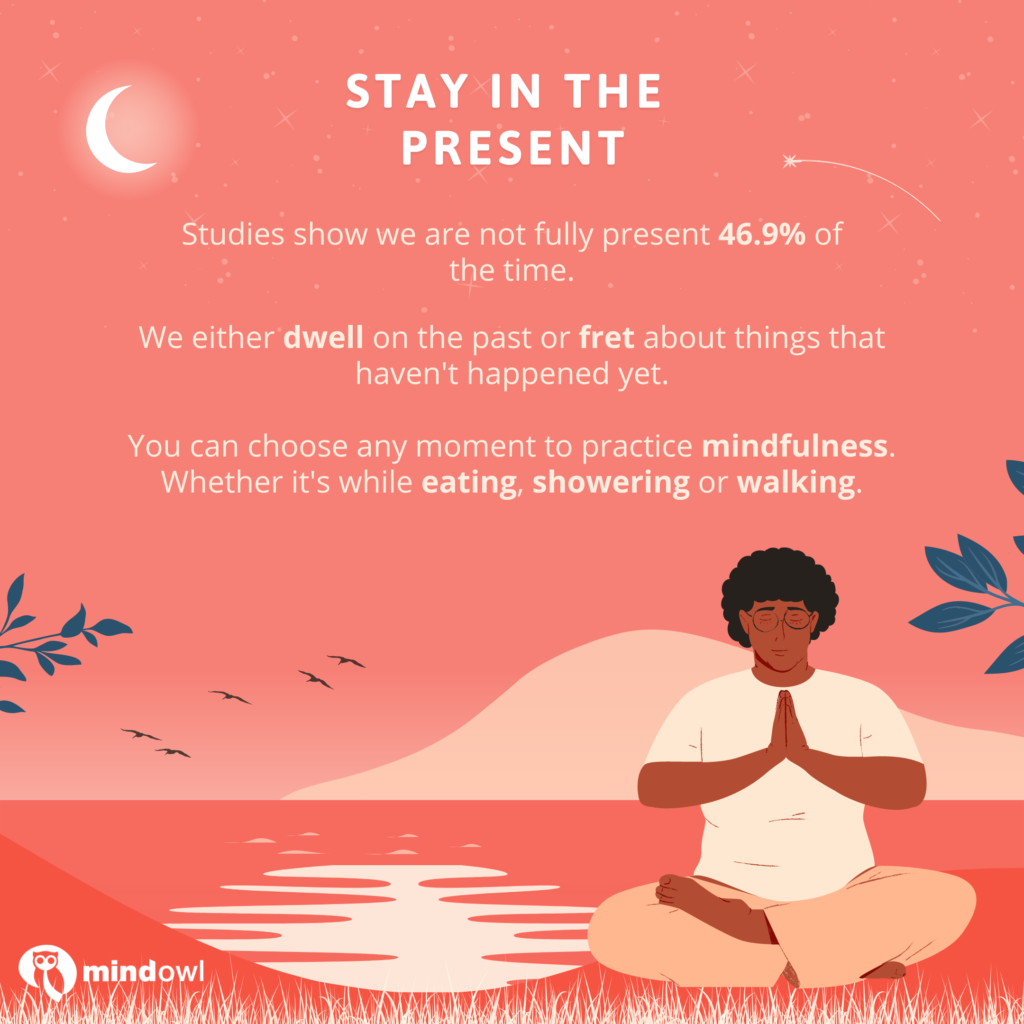After all, what is the purpose of mindfulness?
What does the term ‘mindfulness’ mean to you? These days, it’s a commonly used term, but there are plenty of misconceptions about what it really means. Mindfulness is the basic human ability to be fully present, have awareness of where we are and what we’re doing, and not be overly reactive or overwhelmed by what’s going on around us. It is a quality that every human being already possesses. It’s not something you have to conjure up — you just have to learn how to access it.
Mindfulness is also a type of meditation practice in which you focus on being intensely aware of what you’re sensing, thinking, and experiencing in the present moment, without interpretation, judgment, or attachment. Mindfulness meditation involves a variety of techniques including breathing methods, body scans, and guided imagery; these exercises can help reduce stress, anxiety, tension, and negative emotion from building up.
Spending too much time planning, problem-solving, daydreaming, or thinking negatively can be draining. It can also make you more likely to experience stress, anxiety, and symptoms of depression. Mindfulness practices can help you direct your attention away from this kind of thinking and engage with the world around you.
Let’s explore the benefits of mindfulness in a little more detail.
Benefits of Mindfulness
While Mindfulness is rooted in the Buddhist tradition, most other religions also include a form of prayer or meditation designed to help shift your thoughts towards appreciating the present moment, expanding awareness, and changing your perspective.
Professor Jon Kabat-Zinn, founder and former director of the Stress Reduction Clinic at the University of Massachusetts Medical Center, helped to bring the practice of mindfulness meditation into mainstream medicine and demonstrated that practising mindfulness can have a positive effect on various aspects of physical health, mental health, behavioural tendencies, and attitudes. Some examples of the potential benefits of meditation and mindfulness are:
A Boost in Resilience – Resilience means the ability to cope with daily struggles and develop emotionally, psychologically, and academically as a result. Mindfulness training has been shown to boost resilience and help people to generate positive emotions and attitudes. Mindfulness-Based Cognitive Therapy is a specific therapeutic method designed to help identify and reduce ‘problem behaviours’, attention problems and anxiety, while improving social-emotional resilience.
Reduced Pain and Stress – Mindfulness-Based Stress Reduction (MBSR) is a stress-reduction program that utilises targeted mindfulness techniques to combat a range of physical and mental health issues. But this is just one formalised example of the stress-reducing effects of mindfulness. Numerous scientific studies have supported the idea that mindfulness reduces or helps to alleviate stress by improving emotion regulation, leading to a better mood, and increasing the ability to handle stress.
A Decrease in Depression Symptoms – Mindfulness has long been considered an effective treatment for depression. It has been found to decrease depressive symptoms, anxiety, and stress levels, by enhancing practitioners’ ability to regulate their emotions and helping them identify and step back from intense negative emotions and feelings. Mindfulness is guided by this idea of observing thoughts and feelings and letting them go, rather than fighting them.
A 2016 study by Costa and Barnhofer backs up this theory. They found that, when compared to guided imagery relaxation, brief training in mindfulness helped participants struggling with depression to reduce their symptoms through greater emotion regulation. Another study found that Mindfulness-Based Cognitive Therapy reduced depressive episodes, which had a positive impact on patients’ mental health.
Mindfulness is even helpful for people who are dealing with the most severe forms of depression, including suicidal ideation. In chronically depressed participants with suicidal thoughts, mindfulness was more effective than other treatments in reducing these thoughts.
Mindfulness Techniques
Mindfulness techniques seek to move practitioners towards a state of relaxed alertness, by encouraging them to focus on thoughts and sensations in the present moment, without judgment. In this section of today’s article, we’ll explore a few techniques that can help you reach these states.
Basic Mindfulness Meditation – Basic Mindfulness Meditation is the practice of paying attention to the present moment with an accepting, non-judgmental disposition. The goal isn’t to stop thinking or to empty the mind. Sit quietly and focus on your natural breathing or on a word that you repeat silently. Allow thoughts to come and go without judgment and return your focus to your breathing.
Practise Acceptance – Mindfulness practice involves simply accepting whatever comes up in our minds at any given time. It involves treating yourself well, rather than constantly striving to change things; forgiveness and kindness towards oneself can seriously boost mental well being.
A big part of acceptance is noticing when your mind wanders into thinking, planning, or criticizing, gently redirecting it back to the sensation of breathing. Try and try again. If you miss your intended meditation session, simply reschedule. By practising acceptance during meditation in this way, it becomes easier to understand whatever comes your way during the rest of your day.
Learn to stay in the Present – According to a Harvard study, we are not fully present 46.9% of the time. We either dwell on the past or fret about things that haven’t happened yet. It often leads to mental, emotional, or physical pain in our daily life. When you’re able to stay in the present moment with your thoughts and emotions, then you realize how unimportant the past and future is in comparison. It takes discipline to learn to be present, but you’ll soon realise the benefits.
Mindfulness and present moment awareness can be practiced in a variety of informal ways. It all depends on what works for you. You can choose any task or moment to practice informal mindfulness. Whether it’s while eating, showering, walking, playing, or just relaxing with a partner, these moments can be very rewarding.
Mindfulness-Based Stress Reduction – Mindfulness-Based Stress Reduction (MBSR) is a group program that was developed by Jon Kabat-Zinn in the 1970s to treat patients struggling with life’s difficulties and physical and/or mental illness. MBSR is a flexible and customisable way to help people cope with stress. It consists of two main components, Mindfulness and Yoga, and it can be used to treat a wide variety of conditions, including:
- Anxiety and panic attacks
- Asthma
- Chronic Pain
- Eating disorders
- Headaches
- High blood pressure
- Sleep problems
The benefits of mindfulness meditation are pretty clear to most medical and psychological experts. If you want to find out more about a range of mindfulness techniques and exercises, have a read of our Quick Mindfulness Exercises article.
But mindfulness meditation can be time consuming, and it can be hard — why should people stick with it? Next, we’ll look at why staying committed to your practice is totally worth it.
How to practise mindfulness meditation
If you’re ever struggling, try to follow these simple steps for an effective mindfulness meditation session:
- Start by bringing your attention to your bodily sensations.
- Breathe in through your nose and let your abdomen expand fully.
- Breathe out slowly through your mouth.
- Pay attention to the sensations of each breath.
- Proceed with the task slowly and carefully.
- Engage your senses fully. Notice each physical sensation, sight, touch, and sound so that you savour everything.
- When you notice that you’ve become distracted by something, gently bring your attention to the present moment again.
Reasons to stay Committed
Mindfulness is beneficial for everyone, but it really needs to be practised regularly and often if you want to reap the maximum rewards.
But this can be tricky. So, here are a few tips to help you stay committed to a meditation routine:
- Find the right motivation to help you achieve your goals. If you’re having a busy day or just aren’t feeling like practising mindfulness, it might help to remember why you meditate and what positive effects it can have.
- Find the right time. Each practice will be different, so the length of time appropriate to your practice can vary, and so can the time of day that you choose to meditate. Some days you may only do a few minutes, whereas others you may want to stick it out for a bit longer. It’s up to you!
- Find the right spot for your body type and posture. It’s essential to feel safe and secure wherever you choose to practice. It’s important to find a comfortable and familiar spot where you can practice consistently, but there’s no harm in modifying your position or posture if circumstances require.
- Find the right routine for you and stick to it! When it comes to mindfulness meditation, it’s best to set a minimum commitment for frequency. Whether practicing once a week works best for you, or practicing several days a week, find a routine that will be easy to stick to in the longer term.
You can also help keep yourself committed to the daily practice of meditation by assigning a different value to each of the days.
Dr. Amit Sood, the chair of the Mayo Mind Body Initiative, provides the following Mindfulness schedule as a template:
- Monday: Gratitude – Find things to be thankful for throughout your day, and include them in your loving-kindness meditation or a gratitude journal;
- Tuesday: Compassion – Set an intention to decrease any chronic pain or suffering in yourself or others that you encounter throughout your day;
- Wednesday: Acceptance – Accept yourself as you are and others as they are; appreciate yourself and other people without trying to change them;
- Thursday: Meaning and Purpose – Think about your ultimate purpose in life, and where and how you find meaning;
- Friday: Forgiveness – Forgive yourself first, then extend your forgiveness to others for any past transgressions;
- Saturday: Celebration – Make sure to take a day to celebrate all the joy in your life and the lives of others;
- Sunday: Reflection – Reflect on your week, your month, your year, or whatever period of time makes sense to you at the moment. This can be accomplished through the practice of meditation, prayer, or simple moment awareness.
The Real Purpose of Mindfulness
We’ve now been through many of the key benefits of mindfulness, and it should be clear to you that people practise mindfulness meditation for a wide variety of different reasons.
Mindfulness helps us to cope with negative emotions and physical sensations without acting on them or letting them take control of our behaviour. If we practise mindful breathing in our everyday life, our concentration becomes stronger, and our ability to ignore distractions increases. It’s particularly helpful when we’re feeling distressed or experiencing unpleasant emotions.
By practising mindfulness often, we are training ourselves to be mindful of the present moment, rather than engaging in unproductive and destructive thoughts or impulses, and by doing so, we can begin to access flow states even when experiencing difficult situations and negative emotions. Mindfulness helps reduce feelings of depression and stress by focusing your attention on the present moment on a daily basis, rather than dwelling on past or future events.
Let’s simplify things: the purpose of mindfulness is simply to improve your quality of life in some way. The details will vary between individuals, but this is essentially what it comes down to. Mindfulness can help you understand how your mind works, what it tends to focus on, its habits, desires, worries, expectations, prejudices, insights, and more. Mindfulness is just the ability to notice those mental processes with clarity, before prioritising the thoughts and feelings that matter and separating yourself from the ones that don’t.
Mindfulness can help you understand how your mind works, what it tends to focus on, its habits, desires, worries, expectations, prejudices, insights, and more. Mindfulness is just the ability to notice those mental processes with clarity, before prioritising the thoughts and feelings that matter and separating yourself from the ones that don’t.
Hopefully, after reading this article, you feel aware of the purpose of mindfulness and what it can offer you; if you begin to be more mindful of everything around you, including yourself. Why not give mindfulness throughout the day a read next, as it offers insight into techniques and knowledge on what you can do to appreciate the simple pleasures of the present, of course, while being mindful.
Frequently Asked Questions:
Can mindfulness be harmful?
Some people may experience negative side effects when meditating or practising mindfulness. It is important to be aware that too much of anything can be bad for you, and even in mindfulness this rule applies. Around 6% of people have a negative experience; however it is usually non-reoccurring, and you shouldn’t let this possibility stop you from practising.
What does meditation feel like?
What people feel when they meditate varies, but as you ease into meditating, your mind can shift to a more subtle kind of awareness. Painful physical sensations and emotional distress may disappear temporarily, and there can be an enduring sense of peace, but the goal isn’t to feel anything specific. You can find out more about how meditation makes you feel here.
Where does mindfulness come from?
Mindfulness was originally an ancient Eastern and Buddhist philosophy that dates back around 2,500 years ago. Mindfulness was first introduced to the western world by Jon Kabat-Zinn and other more secular-minded meditation teachers in the mid-late 20th century. You can find out more about the history and origins of mindfulness in our short guide to mindfulness meditation.
MindOwl Founder – My own struggles in life have led me to this path of understanding the human condition. I graduated with a bachelor’s degree in philosophy before completing a master’s degree in psychology at Regent’s University London. I then completed a postgraduate diploma in philosophical counselling before being trained in ACT (Acceptance and commitment therapy).
I’ve spent the last eight years studying the encounter of meditative practices with modern psychology.





